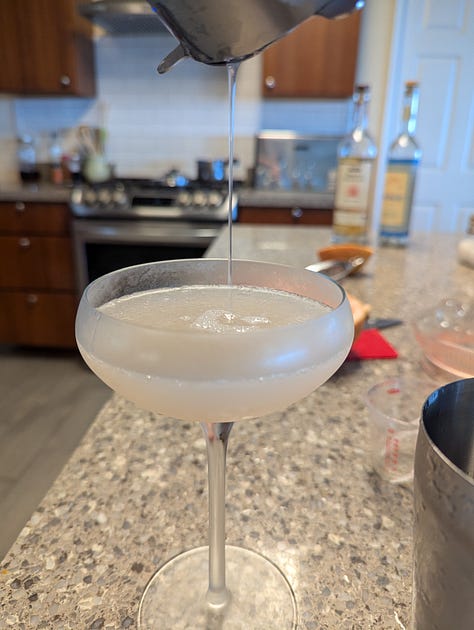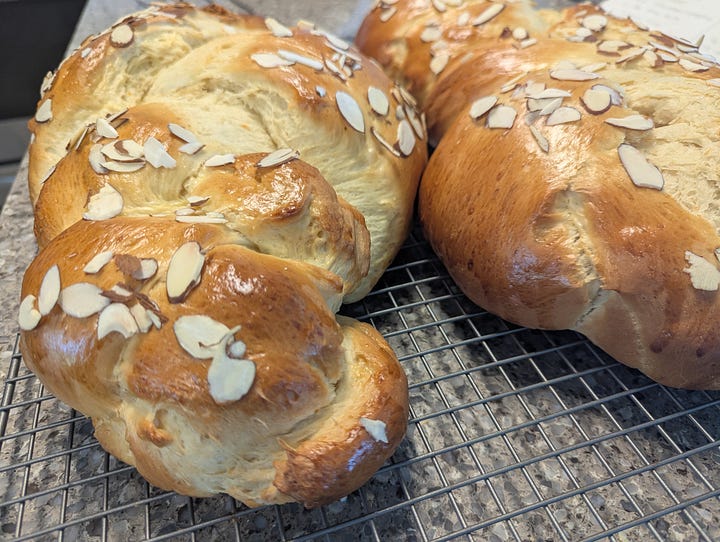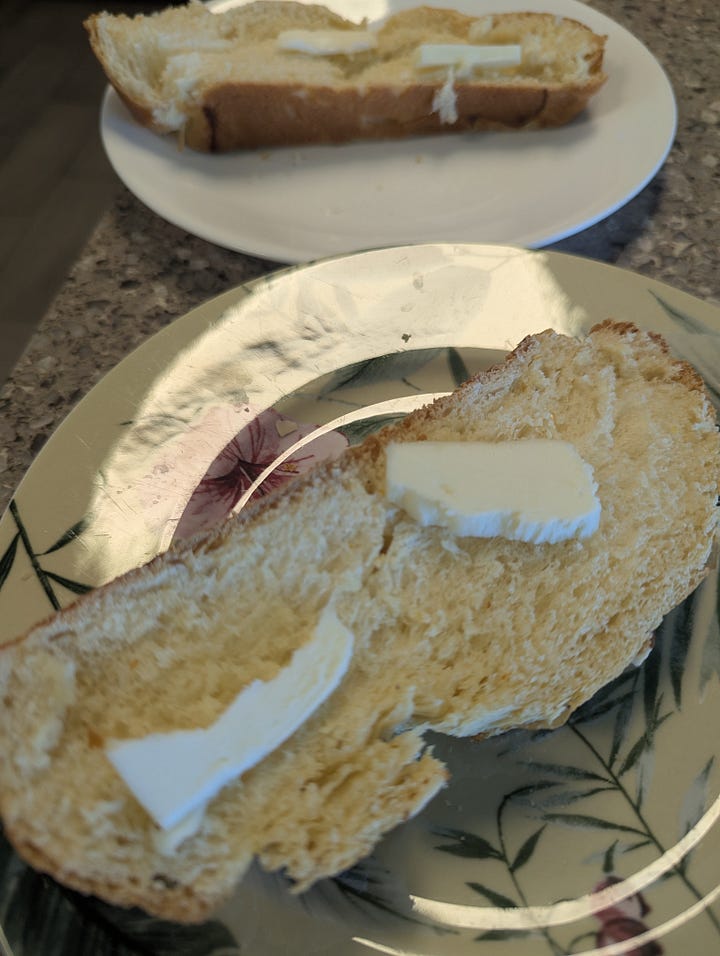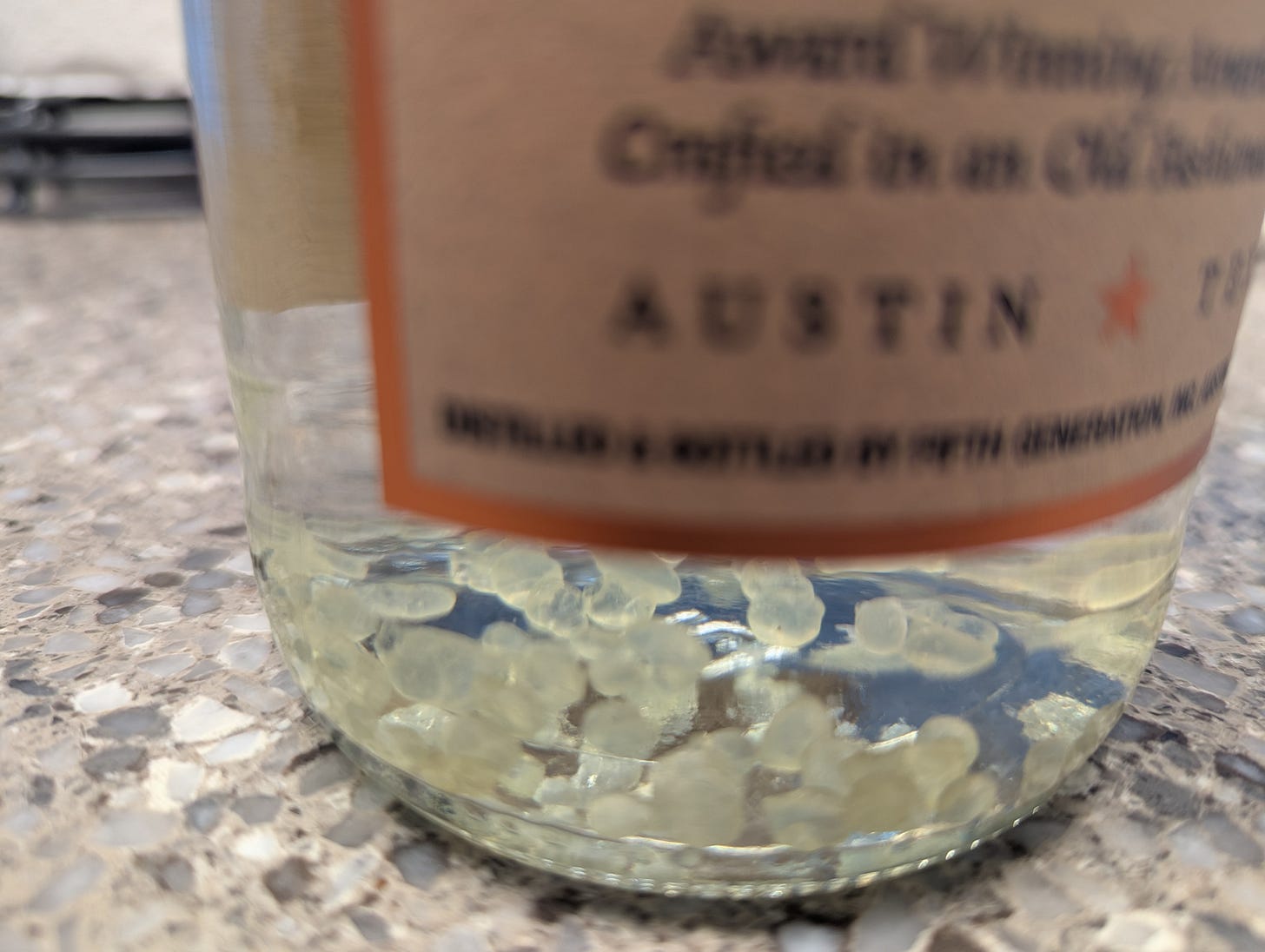Back when my lungs were on fire, I had an interesting time experimenting with using incense ingredients in beverages to give my alveoli a break. This lead down a rabbit hole of research into mastic, a resin from the Pistacia lentiscus tree that is used in many Greek, Turkish, and Middle Eastern recipes. Not only that, but mastic is the OG chewing gum and the Greek root of the word “masticate”: mastic literally means “to chew!” My teacher Persephenie told me that she had to hide her mastic from her son, who would sneak into her apothecary to pilfer this chewy treat.
I myself haven’t actually chewed the stuff—mastic is EXPENSIVE, and I would be wasting some serious money to chew a Doublemint Gum-sized wad of it— but I’ve certainly enjoyed playing with a couple of recipes. The first is another beverage: mastic liqueur. Greece produces many brand names of mastic liqueur, none of which are for sale in far-flung Hilo, Hawaii (despite the fact that our local Kadota Liquors has a surprisingly good selection of random stuff). I knew I’d have to make my own, so I used this recipe as a guide. A little over a month ago, I got a liter of Tito’s, threw in 5 grams of mastic tears, and waited for them to dissolve into the vodka as the recipe instructed.
I waited…and I waited…and I waited some more. Weeks went by. The individual tears eventually fused into a melty, yellow blob at the bottom of the bottle, but they never dissolved like the recipe said they would, no matter how much I shook it. I had hoped to serve the mastic liqueur at my Grandma’s birthday party in March, so when the deadline finally approached, and the mastic still hadn’t changed, I gave up and handed the project to my cocktail-obsessed husband. He strained the vodka and cooked and added the simple syrup. (He used natural cane sugar instead of regular bleached sugar, which is why the result looks a little cloudy.)
Based on my previous, not entirely pleasant experiment with cacao and mastic, I feared that we had wasted a perfectly good bottle of Tito’s on something that would taste like varnish. We poured a shot’s worth and were pleasantly surprised: the mastic liqueur was vibrant and very tasty, piney and citrusy but without a soapy mouthfeel. I’m sure the tons of sugar syrup helped, as did straining the mastic remnants out. (Josh learned the hard way that you don’t wash booze-melted mastic down the drain…he had to pour a few kettles of boiling water down the sink to free the glued-up garbage disposal from the resin.)



Now that we had our mastic liqueur, it was time to figure out a cocktail. We had just enough 400 Conejos mescal and a random CSA grapefruit to make Smoky Tears, so that’s what Josh shook up and put into a coupe for me. Normally, I dislike smoky liquors like mescal, so I was shocked at how much I loved this cocktail. The smoky mescal was the perfect complement to the sweet, resinous mastic liqueur, and drinking it was the flavor equivalent of burning mastic on a coal. It literally tased like I was drinking burning incense in the best way possible. Here’s the recipe!
Smoky Tears (aka Incense Drink)
1.5 fl oz mescal (smokier the better)
1.5 fl oz mastic liqueur
3/4 fl oz grapefruit juice
A bar spoon of simple syrup (to taste—our mastic liqueur was so sweet, I would omit this in future)
Prepare a grapefruit wedge for garnish. Shake all ingredients with ice and strain into a chilled coupe glass.
As much as I love Incense Drink, I fear the smokiness wouldn’t come across too well at the birthday lunch party Mom plans to throw for Grandma next week, so I plan to try this Ionian Spritz out on them. We’ll see how well the Ladies Who Lunch like it!
I also wanted to provide some kind of carb at Grandma’s party, and since Mom had birthday cake covered, I figured I’d try out a recipe for tsoureki, a Greek Easter bread similar to challah and Hawai’i’s own pineapple-infused sweet bread. I love making eggy, rich Easter breads, as the dough is so silky-soft, smooth, and fun to work. In addition to mastic, tsoureki also includes mahleb, a flavoring made from the seeds of the mahleb cherry. Other than pestling mastic, mahleb, and sugar in my mortar, making tsoureki was no different from the challahs and pullas (a Finnish riff on challah with cardamom) that I used to make in my bread-baking days. I don’t make bread all that much anymore, but it was nice to know I still have the knack!


I love Easter breads because they’re so beautiful, so much so that my lazy dough braiding isn’t all that noticeable. The loaves were just lovely, and there’s no incense yet that matches the smell of freshly baked bread. Despite the 240 grams of sugar in the recipe, the bread didn’t taste overly sweet. The almond/amaretto flavor of the mahleb dominated this bread, but the mastic’s piney, bitter flavor was there, underlining the mahleb like a good bass line. I typically prefer my bread toasted, but Easter breads are an exception. Their soft sweetness is best enjoyed with softened butter alone.
Thanks for reading along, friends—Yiamas! May you have a happy Spring season.





